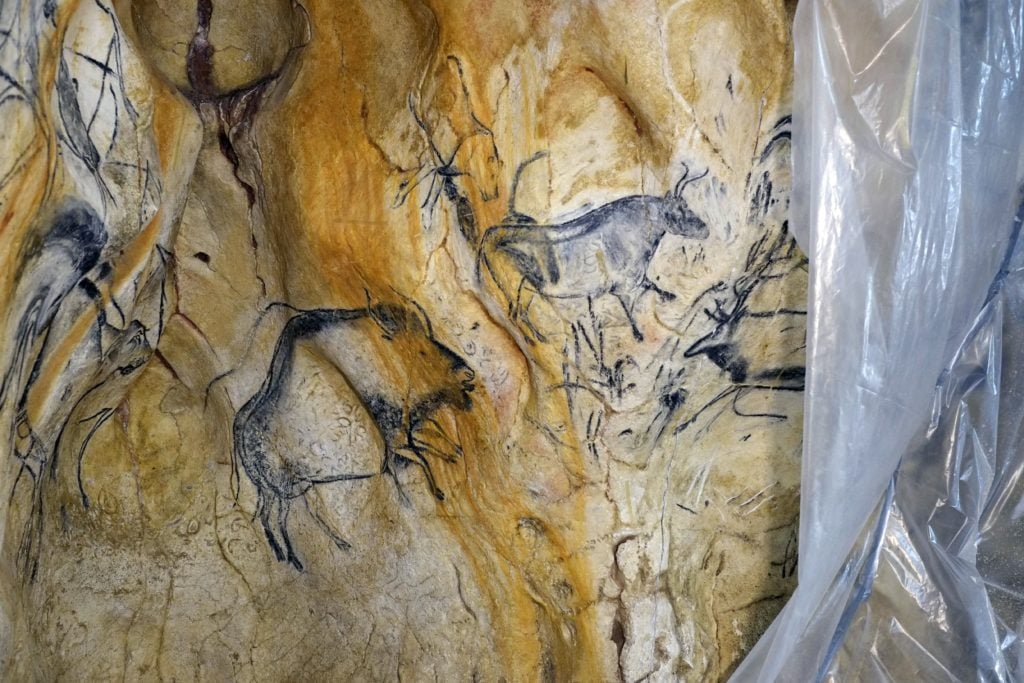The World’s Earliest Artists May Have Been Autistic, Scientists Say in a New Study
Could human artistic creativity be an evolutionary development?
 Photo taken on June 16, Detail of a replica of “La Caverne du Pont-d’Arc”, or Chauvet cave. Photo: JEAN-PHILIPPE KSIAZEK/AFP/Getty Images.
Photo taken on June 16, Detail of a replica of “La Caverne du Pont-d’Arc”, or Chauvet cave. Photo: JEAN-PHILIPPE KSIAZEK/AFP/Getty Images.
Autistic humans may have been some of the world’s earliest artists. In a paper published in British academic journal Open Archaeology, scientists have identified a link between 33,000-year-old cave drawings, autism, and the survival of pre-historic humans during the Ice Age.
According to medical researcher Barry Wright and archaeologist Penny Spikins, the wintery conditions of the Ice Age contributed to the natural selection of individuals on the autism spectrum. The pair’s paper posits that autistic humans’ ability to concentrate on complex tasks for long periods of time helped them memorize their surroundings and recognize elaborate patterns—both essential skills for finding food.
“We suspect that the early development of inherited autism was in part an evolutionary response to ultra-harsh climatic conditions at the height of the last Ice Age,” Spikins told the Independent, “Without the development of autism-related abilities in some people, it is conceivable that humans would not have been able to survive in a freezing environment in which finding food required enhanced skills,” she said.
